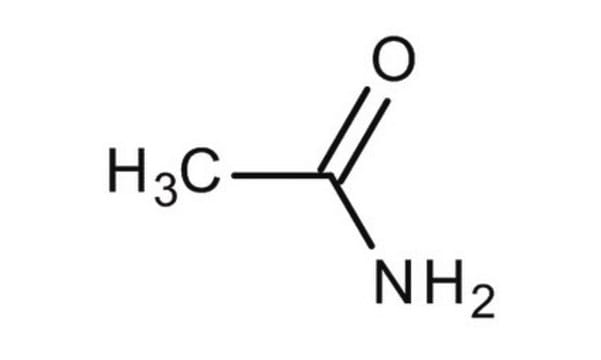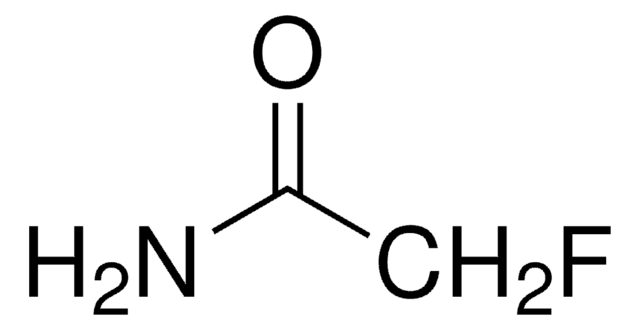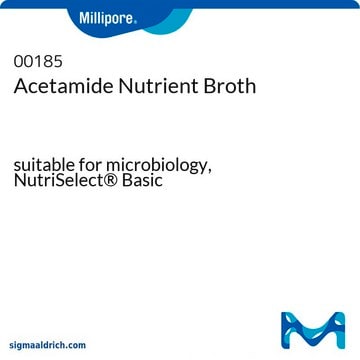All Photos(1)
About This Item
Linear Formula:
CH3CONH2
CAS Number:
Molecular Weight:
59.07
Beilstein:
1071207
EC Number:
MDL number:
UNSPSC Code:
12352111
PubChem Substance ID:
NACRES:
NA.77
Recommended Products
biological source
synthetic
Quality Level
vapor pressure
1 mmHg ( 65 °C)
Assay
~99% (GC)
form
powder or crystals
bp
221 °C (lit.)
mp
78-80 °C (lit.)
solubility
water: 0.2 g/L, clear, colorless
SMILES string
CC(N)=O
InChI
1S/C2H5NO/c1-2(3)4/h1H3,(H2,3,4)
InChI key
DLFVBJFMPXGRIB-UHFFFAOYSA-N
Gene Information
rat ... Ggt1(116568)
Looking for similar products? Visit Product Comparison Guide
General description
Acetamide based derivatives are potential anti-microbial, antifungal agents, used as disinfectants. Cigarette smoking triggers acetamide release. It is a minor by-product of paracetamol degradation. Acetamide is carcinogenic in rats.
Application
Acetamide has been used:
- for the induction of recombinant protein in M. smegmatis
- as a component of acetamide medium for fungal selection
- in quenching experiment in mice tissue samples
Signal Word
Warning
Hazard Statements
Precautionary Statements
Hazard Classifications
Carc. 2
Storage Class Code
11 - Combustible Solids
WGK
WGK 1
Flash Point(F)
Not applicable
Flash Point(C)
Not applicable
Personal Protective Equipment
dust mask type N95 (US), Eyeshields, Gloves
Choose from one of the most recent versions:
Already Own This Product?
Find documentation for the products that you have recently purchased in the Document Library.
Customers Also Viewed
Gas chromatographic?mass spectrometric analysis of acrylamide and acetamide in cigarette mainstream smoke after on-column injection
Diekmann J, et al.
Journal of Chromatographic Science, 46(7), 659-663 (2008)
The RD1 proteins of Mycobacterium tuberculosis: expression in Mycobacterium smegmatis and biochemical characterization
Daugelat S, et al.
Microbes and Infection, 5(12), 1082-1095 (2003)
Synthesis of biologically active 2-chloro-N-alkyl/aryl acetamide derivatives
Katke SA, et al.
International Journal of Pharma Sciences and Research, 2, 148-156 (2011)
Muscle Satellite Cell Cross-Talk with a Vascular Niche Maintains Quiescence via VEGF and Notch Signaling
Verma M, et al.
Cell Stem Cell, 23(4), 530-543 (2018)
Maureen Hamilton et al.
Microbial cell factories, 19(1), 22-22 (2020-02-07)
Yarrowia lipolytica is an oleaginous yeast that can be genetically engineered to produce lipid and non-lipid biochemicals from a variety of feedstocks. Metabolic engineering of this organism usually requires genetic markers in order to select for modified cells. The potential
Our team of scientists has experience in all areas of research including Life Science, Material Science, Chemical Synthesis, Chromatography, Analytical and many others.
Contact Technical Service









